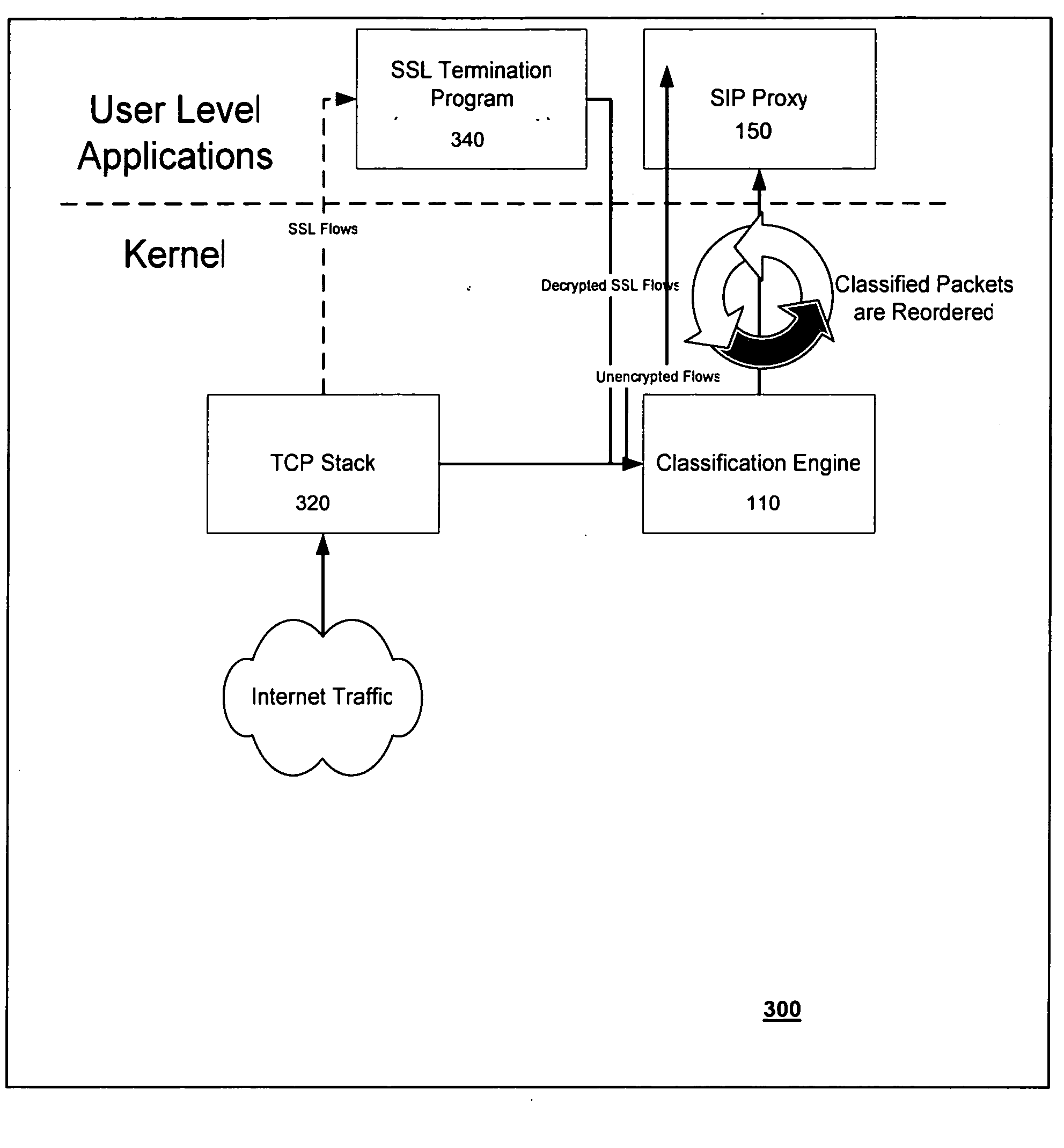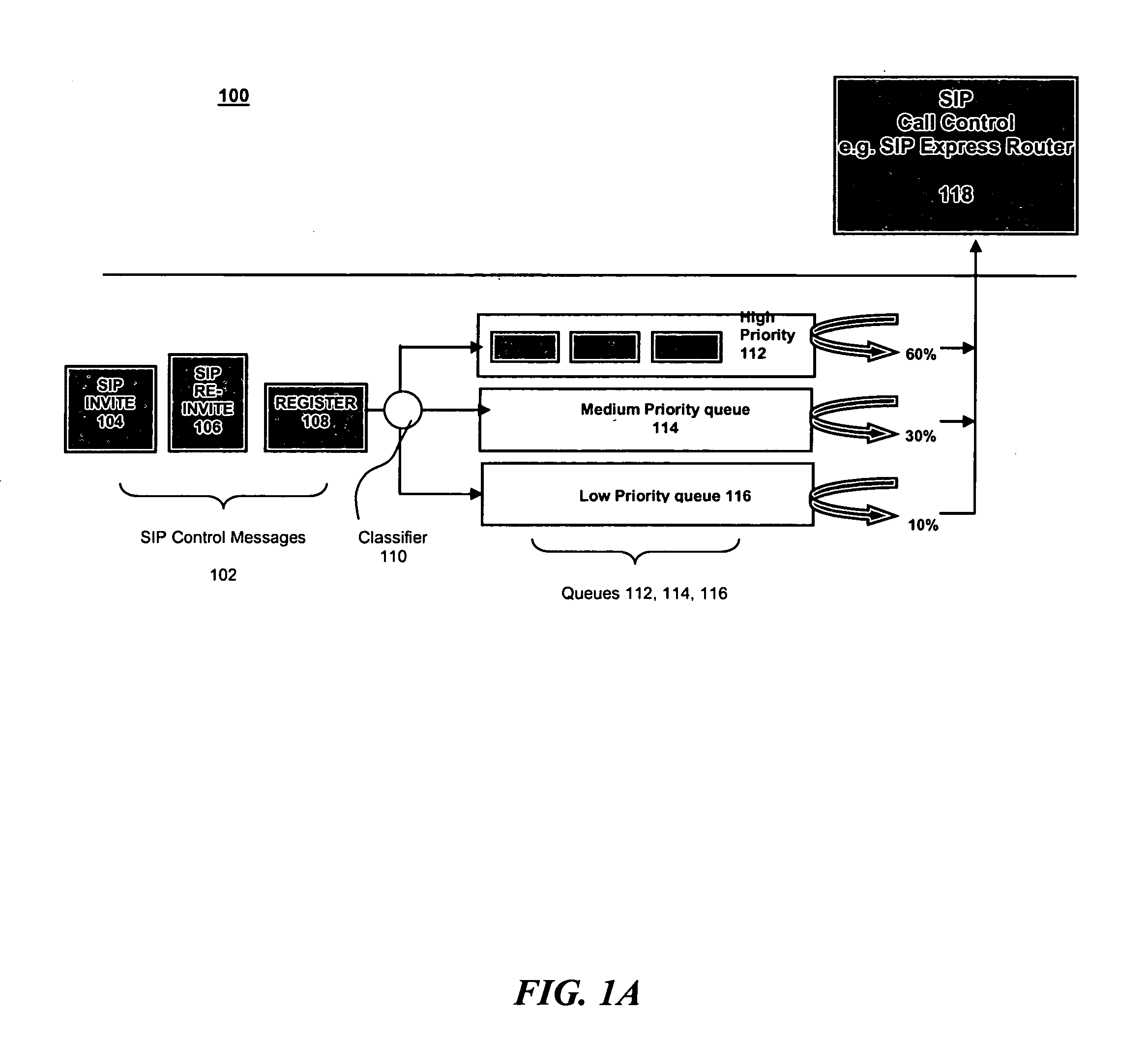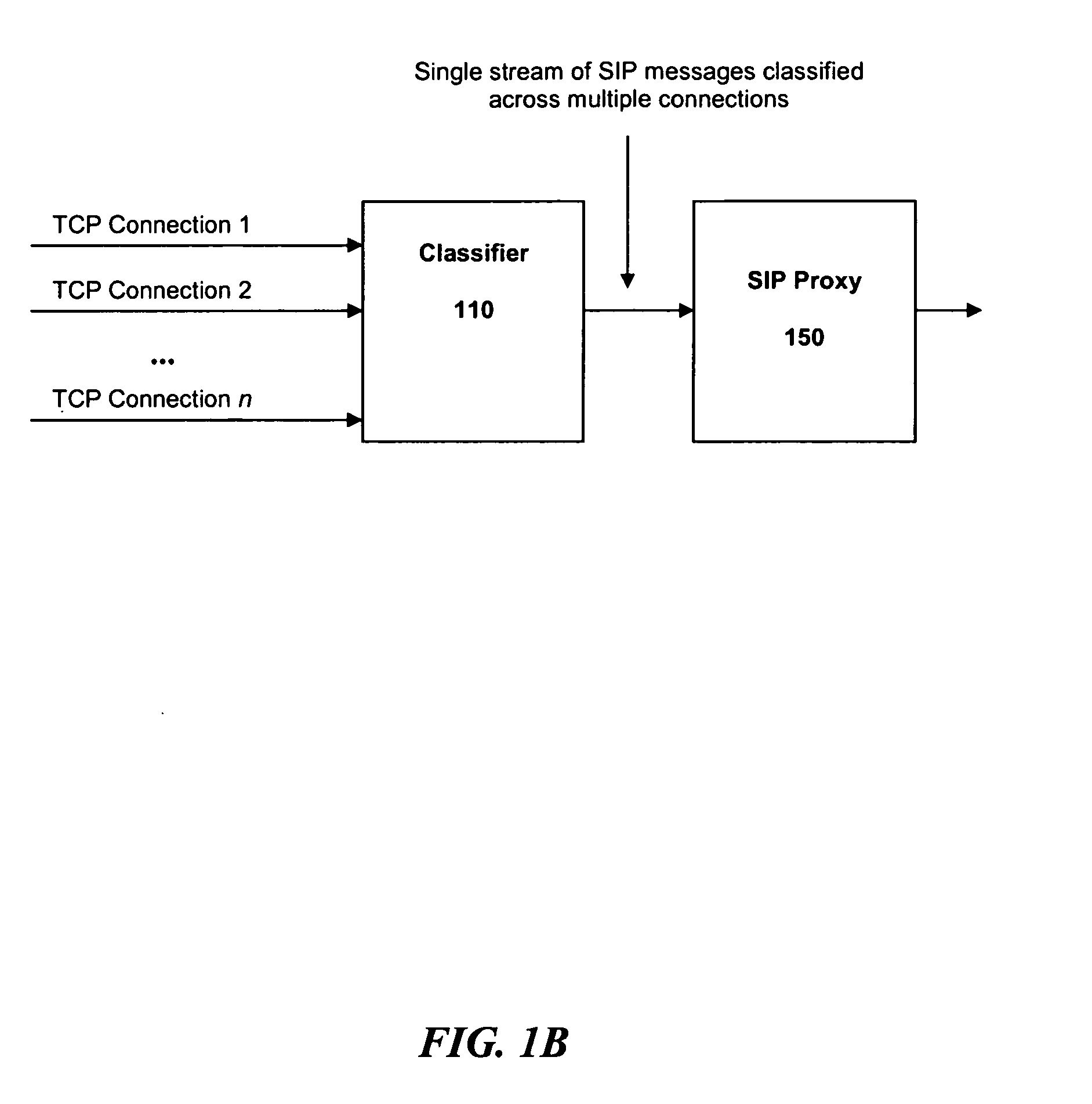Overload protection for SIP servers
- Summary
- Abstract
- Description
- Claims
- Application Information
AI Technical Summary
Benefits of technology
Problems solved by technology
Method used
Image
Examples
Embodiment Construction
[0028]Described is a system and method for classifying and prioritizing server requests using operator-specified metrics of value / revenue, so that under overload conditions, revenue is maximized by servicing the higher-value requests first. A novel solution is to leverage the rich header information contained within SIP messages to classify the incoming stream of messages according to operator-defined rules; and then based on the classification, deliver the highest priority messages to the server first. This is achieved with a novel SIP message classification algorithm. Although its use is not limited to SIP servers; for simplicity, the present discussion of the invention focuses on the system and method as it relates to SIP servers. The present discussion also focuses on message value and assumes that the service delay is the same for all request types. In some scenarios, the service delay will be different for each request type. This can be handled by normalizing the value per mes...
PUM
 Login to View More
Login to View More Abstract
Description
Claims
Application Information
 Login to View More
Login to View More - R&D
- Intellectual Property
- Life Sciences
- Materials
- Tech Scout
- Unparalleled Data Quality
- Higher Quality Content
- 60% Fewer Hallucinations
Browse by: Latest US Patents, China's latest patents, Technical Efficacy Thesaurus, Application Domain, Technology Topic, Popular Technical Reports.
© 2025 PatSnap. All rights reserved.Legal|Privacy policy|Modern Slavery Act Transparency Statement|Sitemap|About US| Contact US: help@patsnap.com



